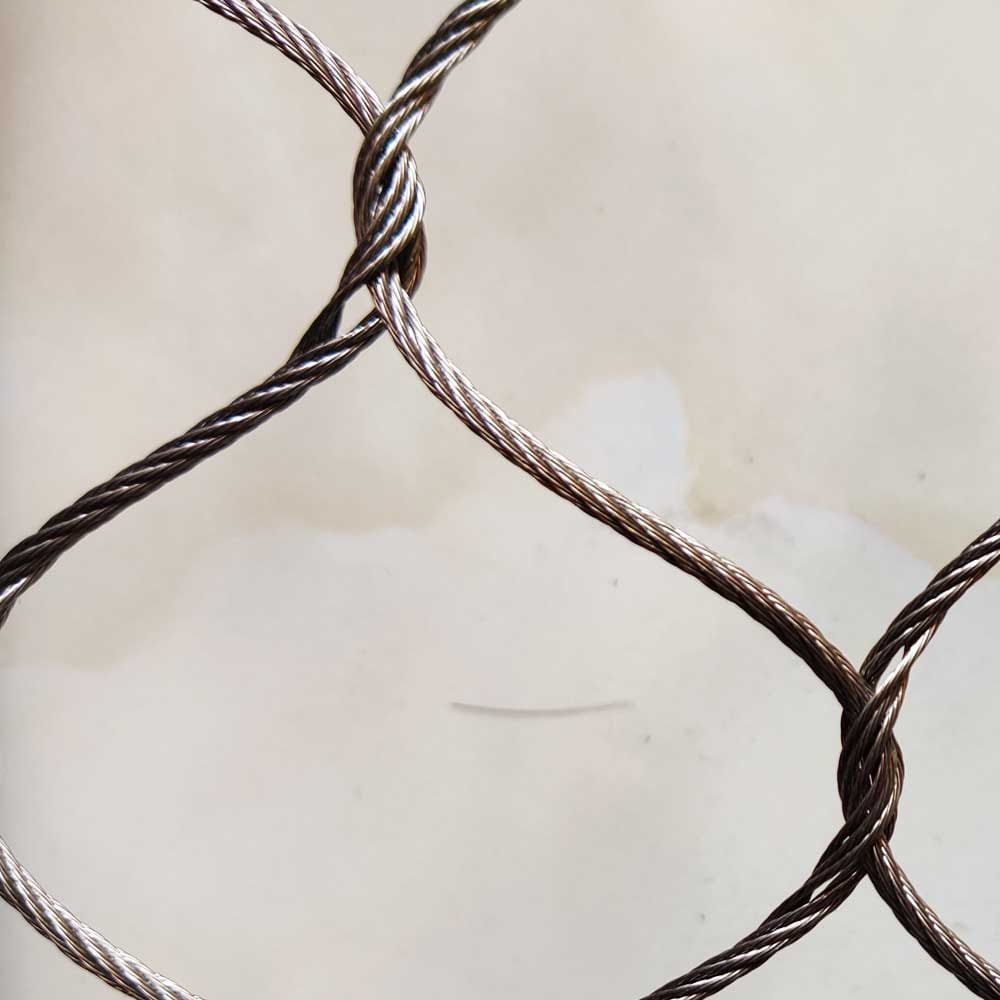Introduction to Barrier Fences
Barrier fences are structures commonly employed to delineate boundaries, enhance security, and provide safety in various settings. These fences serve diverse purposes, ranging from preventing unauthorized access to protecting wildlife. In essence, barrier fences act as physical impediments that can restrict movement across specific areas, thereby safeguarding both human and animal populations. Their design and construction can vary significantly depending on the intended use, making them a versatile solution across multiple contexts.
One of the primary functions of a barrier fence is to ensure safety. In residential areas, these fences are often installed to keep children and pets within a secured perimeter while deterring intruders. Additionally, barrier fences are crucial in parks and recreational areas, preventing wildlife from roaming onto roadways, thereby reducing the risk of animal-vehicle collisions. This aspect underscores the importance of implementing effective barriers to maintain safety in increasingly urbanized environments.
Furthermore, barrier fences hold substantial importance in terms of security. Businesses and commercial properties frequently utilize them to protect assets and control access to sensitive areas. Security fences can range from simple chain-link structures to more fortified options, including barbed wire and electronic systems, which collectively serve to deter criminal activity. This heightened focus on security emphasizes the need for effective boundary barriers in our communities.
Lastly, the role of barrier fences extends into environmental protection. These fences can be instrumental in conserving natural habitats by guiding wildlife movement, preventing habitat fragmentation, and controlling invasive species. Thus, their application in ecological contexts contributes significantly to biodiversity preservation.
In summation, barrier fences are essential structures that offer myriad benefits across safety, security, and ecological landscapes. Understanding their purpose and functionality will aid in appreciating the varied discussions on their types and effective implementation in subsequent sections.
Types of Barrier Fences
Barrier fences serve various purposes in both residential and commercial settings, and understanding the types available can help individuals make informed decisions based on their specific needs. Among the commonly used types of barrier fences are chain-link fences, wooden fences, vinyl fences, and electric fences, each with distinct characteristics.
Chain-link fences are constructed from galvanized steel wires that are woven together to form a diamond pattern. This type is known for its durability and low maintenance requirements. Chain-link is widely used for security purposes, such as enclosing properties or protecting pools. However, one of the drawbacks is that it offers limited privacy, as visibility through the fence is possible.
Wooden fences are a popular choice for homeowners looking for aesthetic appeal and privacy. They are made from various types of wood, such as cedar or pine, and can be designed in different styles, including picket, privacy, or ranch. While wooden fences can enhance property appearance, they may require regular maintenance, such as staining or painting, to prevent rot and degradation from weather exposure.
Vinyl fences have gained popularity due to their flexibility and low maintenance. They mimic the look of wood but do not require painting or staining, making them a practical option for many homeowners. These fences come in a variety of styles and colors, providing ample design possibilities. However, they may be more expensive upfront compared to wooden or chain-link fences.
Electric fences stand out as a security option, particularly for livestock management and high-security areas. Utilizing low-voltage electrical currents, these fences deter intruders or animals from breaching the property line. While effective, they require proper installation and signage to ensure safety for both people and pets.
Choosing the right type of barrier fence involves evaluating these options based on factors such as the purpose of the fence, budget constraints, and aesthetic preferences. Each type has its own set of benefits and drawbacks, making careful consideration necessary to achieve the desired outcome.
Key Benefits of Installing a Barrier Fence
Barrier fences serve a multitude of purposes that are essential for both residential and commercial properties. One of the primary benefits of installing a barrier fence is enhancing security. According to statistics, properties with fencing experience a 50% reduction in unauthorized access and vandalism incidents. This is particularly evident in areas that are prone to criminal activities. A well-constructed barrier fence acts as a physical deterrent, signaling to potential intruders that access is restricted.
In addition to security, barrier fences provide privacy, creating a sanctuary for homeowners and business operators alike. A privacy fence can shield outdoor areas from prying eyes, allowing residents to enjoy their yards without feeling exposed. This benefit is crucial in densely populated neighborhoods where houses are situated closely together. By establishing a clear boundary, these structures help foster a sense of personal space and well-being.
Another advantage of barrier fences is their role in marking property lines. Clearly defined borders can prevent disputes between neighbors regarding land ownership and usage. This is particularly important for both aesthetic and legal reasons, as misunderstandings over property boundaries can lead to conflicts that necessitate mediation or even legal intervention.
Moreover, barrier fences provide a safe environment for pets and children. By enclosing yards or specific areas, they prevent family members, especially young children and pets, from wandering into potentially dangerous situations, such as busy streets. Studies suggest that having a fenced yard significantly decreases the risk of pet-related accidents and keeps children safe during outdoor play.
Overall, the installation of barrier fences brings multiple benefits that enhance security, privacy, and safety, while also providing clear property definitions. The importance of these structures is evident in both residential and commercial settings, underscoring their necessity in modern property management and personal comfort.
Evaluating Your Needs: Factors to Consider Before Installation
Before deciding to install a barrier fence, it is crucial to evaluate several important factors that will influence your purchase and the effectiveness of the fence. The first step is to clearly define the purpose of the barrier fence. Whether the goal is to enhance security, provide privacy, or serve as a decorative element, understanding the primary function will direct subsequent decisions.
Another key consideration is your budget. Barrier fences come in various materials, designs, and costs, ranging from economical options like chain-link fences to more expensive choices such as wrought iron or customized wooden designs. Assessing your financial capacity not only aids in narrowing down your selections but also helps to avoid overspending on unnecessary features.
Aesthetic preferences should not be overlooked. The appearance of the barrier fence can significantly affect the overall look of your property. It’s important to choose a style that complements your home and landscape. Research various designs and materials to find a fence that suits both your personal taste and your home’s architectural style.
Local regulations and ordinances are also essential factors to consider. Many municipalities have specific guidelines regarding the height, style, and materials of barrier fences. Before committing to a purchase, it is advisable to consult local zoning laws and obtain any necessary permits to ensure compliance.
Finally, evaluating the type of terrain where the barrier fence will be installed can influence material choice and installation method. Different terrains may require unique approaches or adaptations, such as additional support posts or specialized anchoring techniques. Taking these factors into account will help you select a barrier fence that meets your needs effectively and efficiently.
Installation Process: DIY vs. Professional Services
The installation of barrier fences can be approached in two primary ways: Do-It-Yourself (DIY) or hiring professional services. Each method presents its own set of advantages and disadvantages that should be evaluated based on individual circumstances, expertise, and budget.
When considering the DIY approach, one of the most significant advantages is cost savings. By opting to install a barrier fence independently, individuals can avoid labor costs associated with hiring professionals. Moreover, DIY projects provide a sense of accomplishment and the opportunity to customize the fence according to personal preferences and specific site requirements. However, this approach may require an investment of time, particularly for those without prior experience. The learning curve can lead to potential errors that may necessitate costly corrections later on, potentially negating any initial savings.
On the other hand, hiring professional services for barrier fence installation typically guarantees a higher level of expertise. Professionals bring experience and industry knowledge, ensuring that the fence is installed correctly and adheres to local regulations. Additionally, utilizing professional services often results in a quicker installation process, allowing property owners to enjoy the benefits of their new barrier fence sooner. Nevertheless, these services come at a cost, which can vary significantly based on factors such as the type of fence, terrain, and geographical location.
Before deciding between DIY and professional installation, it is essential to assess factors such as the complexity of the project, the availability of tools, and the time one can dedicate to the task. Evaluating potential challenges, such as soil conditions or property lines, is also crucial in determining the best approach for successful installation of a barrier fence. Each option offers distinct pathways to achieving a functional and aesthetically pleasing installation, making careful consideration imperative.
Maintenance Tips for Barrier Fences
Maintaining a barrier fence is crucial for ensuring its longevity and effectiveness as a protective structure. Regular care helps prevent deterioration and enhances its aesthetic appeal. Here are some essential maintenance tips to keep your barrier fence in optimal condition.
First and foremost, regular cleaning is vital. Depending on the materials used in your barrier fence, debris such as dirt, leaves, and moss can accumulate over time. Use a soft brush and mild detergent to clean wooden, vinyl, or metal barriers. This not only preserves the appearance but also prevents the growth of mold or mildew that can lead to damages. A thorough cleaning at least twice a year can make a significant difference.
Inspecting your fence for repairs should be conducted at least once a season. Look for signs of wear, such as cracked boards, rust spots, or loose fittings. Taking prompt action to repair these issues can prevent more extensive damage. For wooden barriers, replace any rotting timber immediately; for metal fences, address rust with appropriate treatments and repaint as necessary.
Seasonal checks provide an opportunity to prepare your barrier fence against inclement weather. Reinforce any loose posts and ensure the drainage is clear to prevent water accumulation, which might weaken the integrity of the fence. In winter, remove snow buildup to avoid excessive pressure that could lead to bending or breaking.
Another consideration is pest management. Certain types of barrier fences, particularly wooden ones, can attract pests such as termites. Regularly check for signs of infestation and treat as necessary, using pest control methods that are safe and effective. Additionally, applying a protective sealant can safeguard wooden barriers against both pests and harsh weather conditions.
In conclusion, the diligent maintenance of your barrier fence through cleaning, timely repairs, seasonal checks, and pest management will ensure its effectiveness and prolong its lifespan, protecting your property and enhancing its visual appeal. Employing these practices fosters a durable investment that withstands the test of time.
Barrier Fences and Local Regulations
The installation of barrier fences is often governed by a range of local regulations that vary significantly from one location to another. Homeowners should be aware of these laws to ensure compliance and avoid potential legal complications. Understanding local zoning laws is the first step; these laws dictate how properties can be developed and used, influencing the type of barriers that are permissible on the property.
Height restrictions are another critical consideration when installing a barrier fence. Many municipalities set specific guidelines regarding how high a fence can be, which may differ based on the location of the fence within the property, such as front yard versus back yard. Some areas may allow taller fences in the rear yard, while others may mandate lower heights to maintain a visually appealing neighborhood aesthetic. Violating these restrictions can not only result in fines but also may necessitate the removal or modification of the installed barrier.
In addition to height restrictions, obtaining the necessary permits is a vital legal requirement in many regions. Homeowners may need to submit detailed plans of their intended barrier fence along with a permit application, which can involve a review process by local governmental bodies. Failure to secure the right permits can lead to permits being denied post-installation, which could result in costly removal or adjustments.
It is essential for property owners to consult their local building codes and zoning regulations prior to commencing any project involving barrier fences. Engaging with local authorities or consulting a qualified professional who understands the regulations can provide invaluable guidance, ensuring that installations are completed smoothly and compliant with all applicable laws.
Innovative Barrier Fence Designs
In recent years, the concept of barrier fences has evolved significantly, focusing not only on functionality but also on aesthetic appeal. Modern designs now integrate creativity with utility, appealing to homeowners looking for ways to enhance their landscapes while ensuring safety and privacy. One such innovation is the living fence, which utilizes plant materials to form a natural barrier. These fences, composed of shrubs, trees, or vines, can provide effective screening and wind protection while seamlessly blending with the surrounding environment. They offer ecological benefits, such as supporting local wildlife and improving air quality.
Another trending design in barrier fencing is decorative styles. These designs often utilize varied materials and artistic patterns, transforming the traditional fence into an eye-catching feature. For instance, aluminum or wrought iron can be shaped into intricate designs that complement the architectural style of a home. By incorporating elements such as geometric patterns or customized engravings, these decorative barriers not only serve to delineate property lines but also add a unique character to outdoor spaces.
Furthermore, multifunctional barriers are becoming increasingly popular. These fences combine traditional fencing purposes with additional features, such as built-in gates, integrated lighting, or even climbing frames for plants. This multifaceted approach allows homeowners to maximize the utility of their barriers, creating spaces that serve as both protective and functional elements within their gardens or yards. The blend of functionality and design in these modern barrier fences not only contributes to security but can significantly enhance the visual appeal of a property, providing an inviting atmosphere while ensuring safety.
Overall, the innovation in barrier fence designs reflects a growing preference for structures that are both practical and visually appealing. By exploring various options, homeowners can select designs that meet their specific needs while contributing positively to the overall landscape aesthetics.
Conclusion: Making the Right Choice for Your Property
In choosing the appropriate barrier fence for your property, it is essential to revisit the key points discussed throughout this article. Barrier fences serve a multifaceted purpose, including enhancing security, providing privacy, and delineating property boundaries. Understanding the various types of barriers available—such as wooden, vinyl, chain-link, and wrought iron—can significantly impact functionality and aesthetic appeal. Each option presents unique advantages and challenges that should be assessed based on individual property requirements.
When selecting a barrier fence, several key considerations must be taken into account. First and foremost, it is crucial to evaluate your specific needs, including the level of security desired, the degree of privacy required, and any local regulations that may influence your choice. Additionally, aspects such as maintenance, durability, and installation costs should be factored into your decision-making process. The material of the barrier fence can also affect its longevity and how well it complements your property’s landscape and architectural style.
Moreover, it is important to reflect on the environmental implications of your chosen material and design. Sustainable options, such as eco-friendly wood or recycled materials, can contribute positively to the environment while meeting your fencing needs. Considering the long-term benefits of the barrier fence, such as potential property value enhancement and insurance advantages, can further solidify the decision to invest in this crucial element of property management.
Ultimately, making an informed choice regarding the installation of a barrier fence requires careful thought about personal preferences and functional necessities. By weighing all relevant factors, property owners can ensure that they select a barrier fence that not only adds value to their home but also meets their lifestyle and safety requirements effectively.


